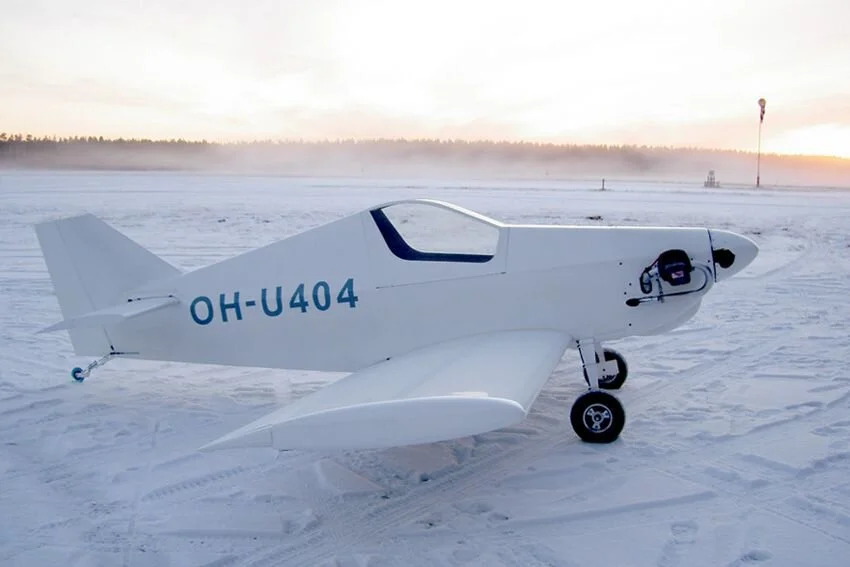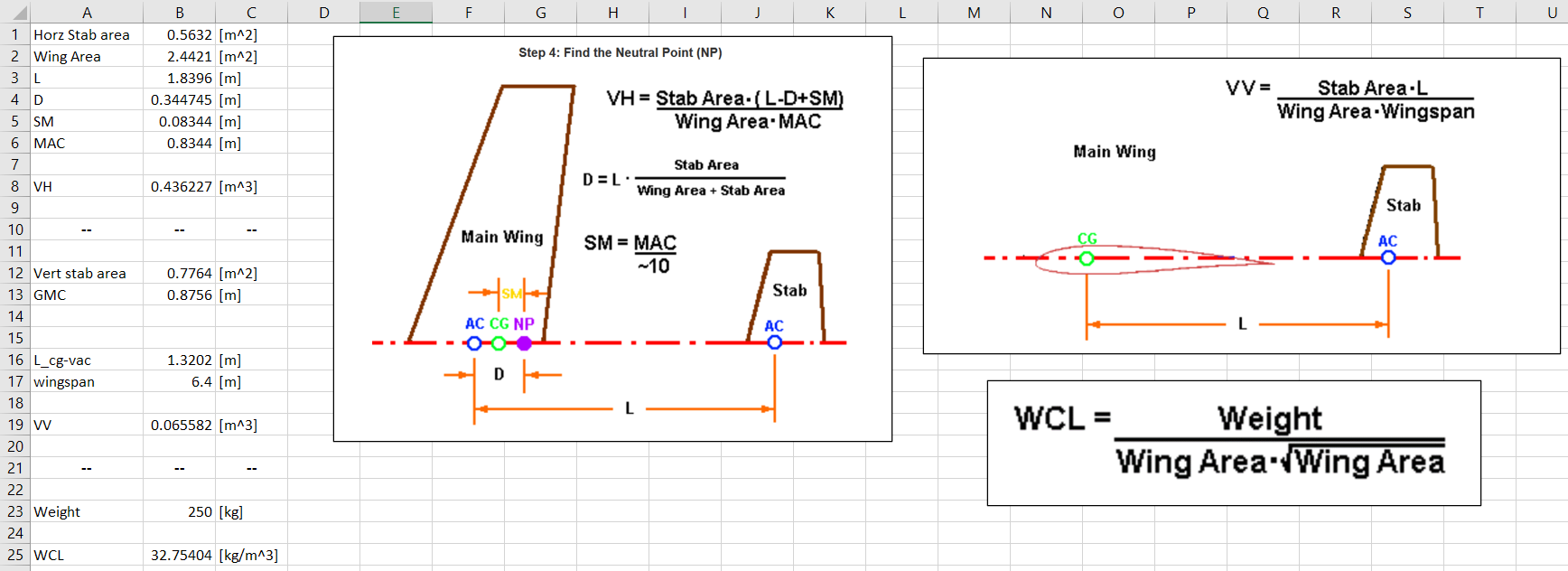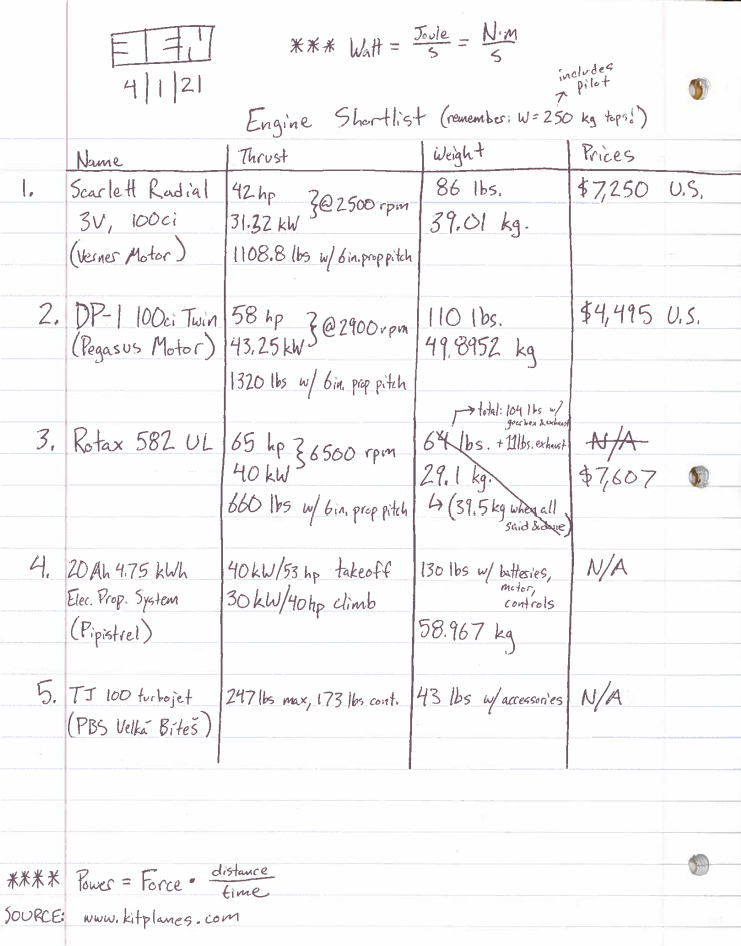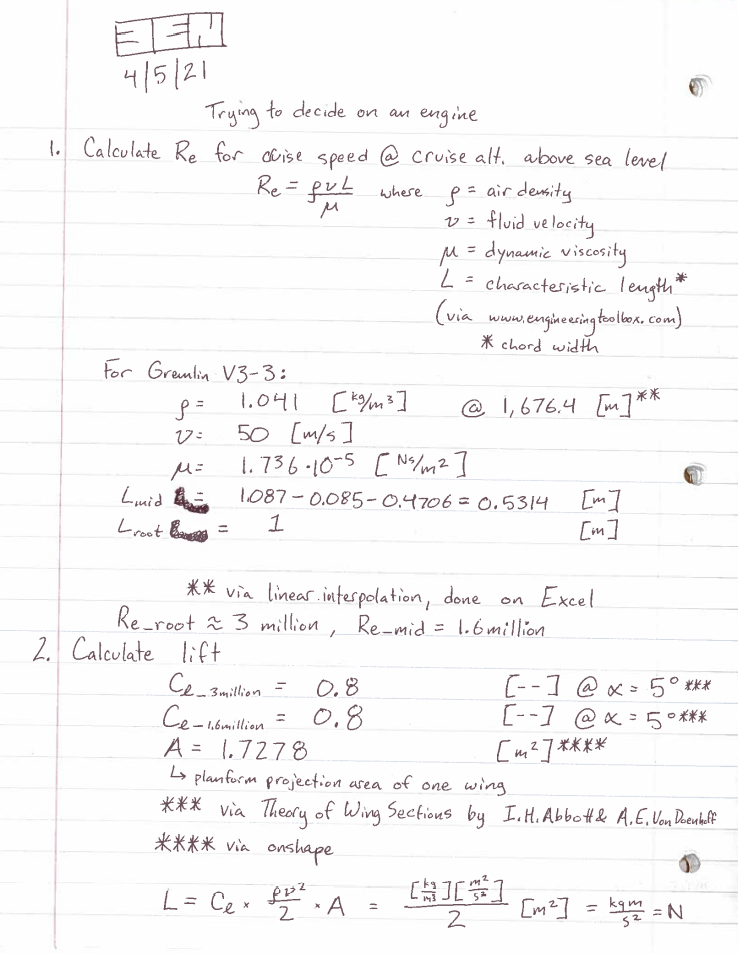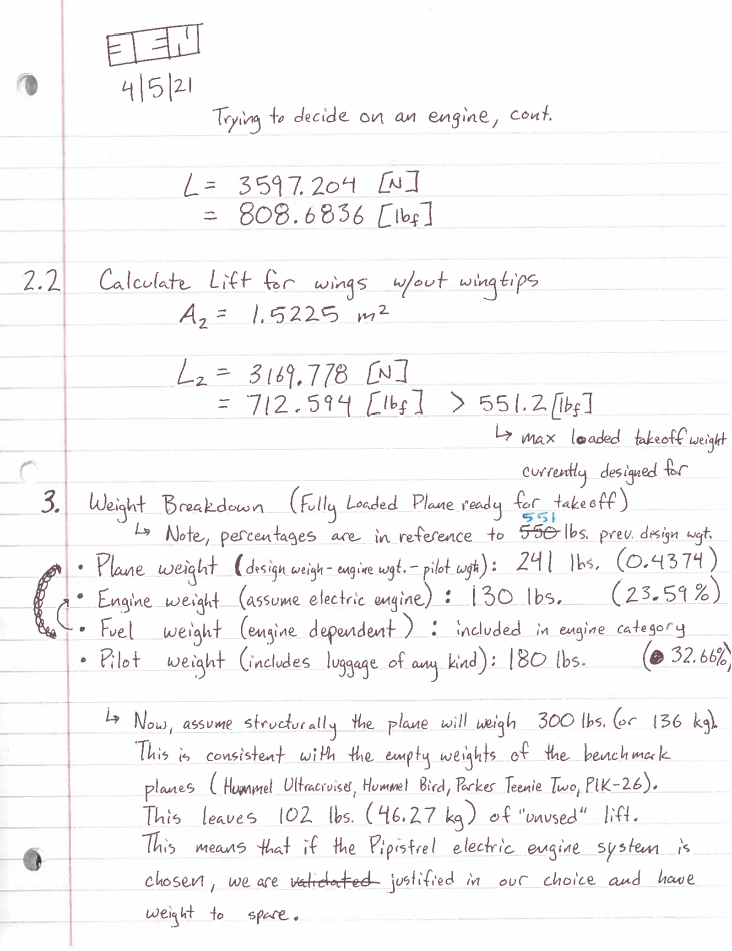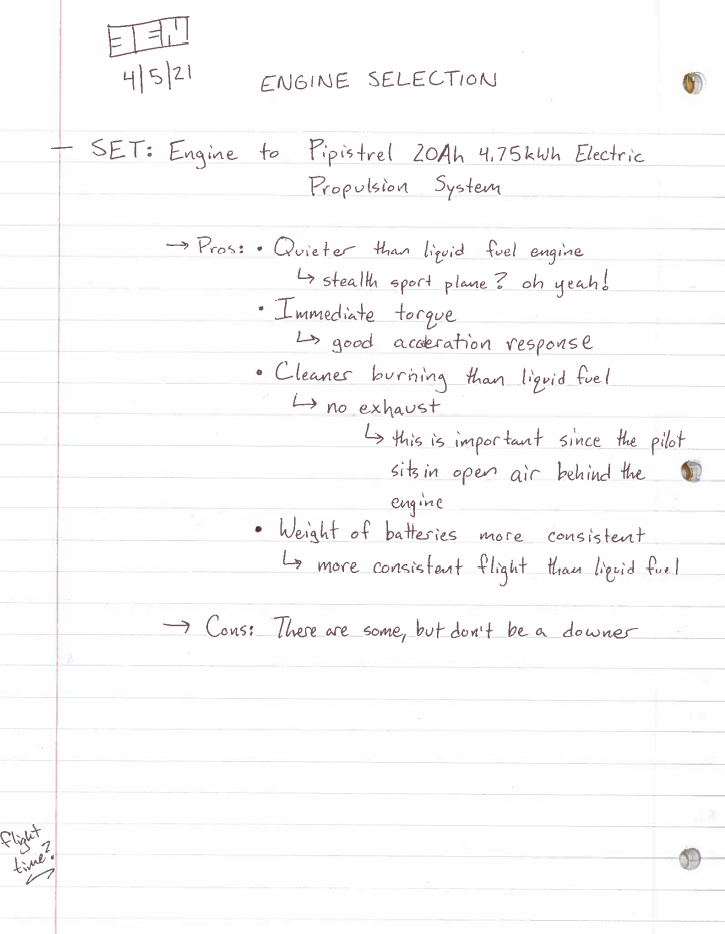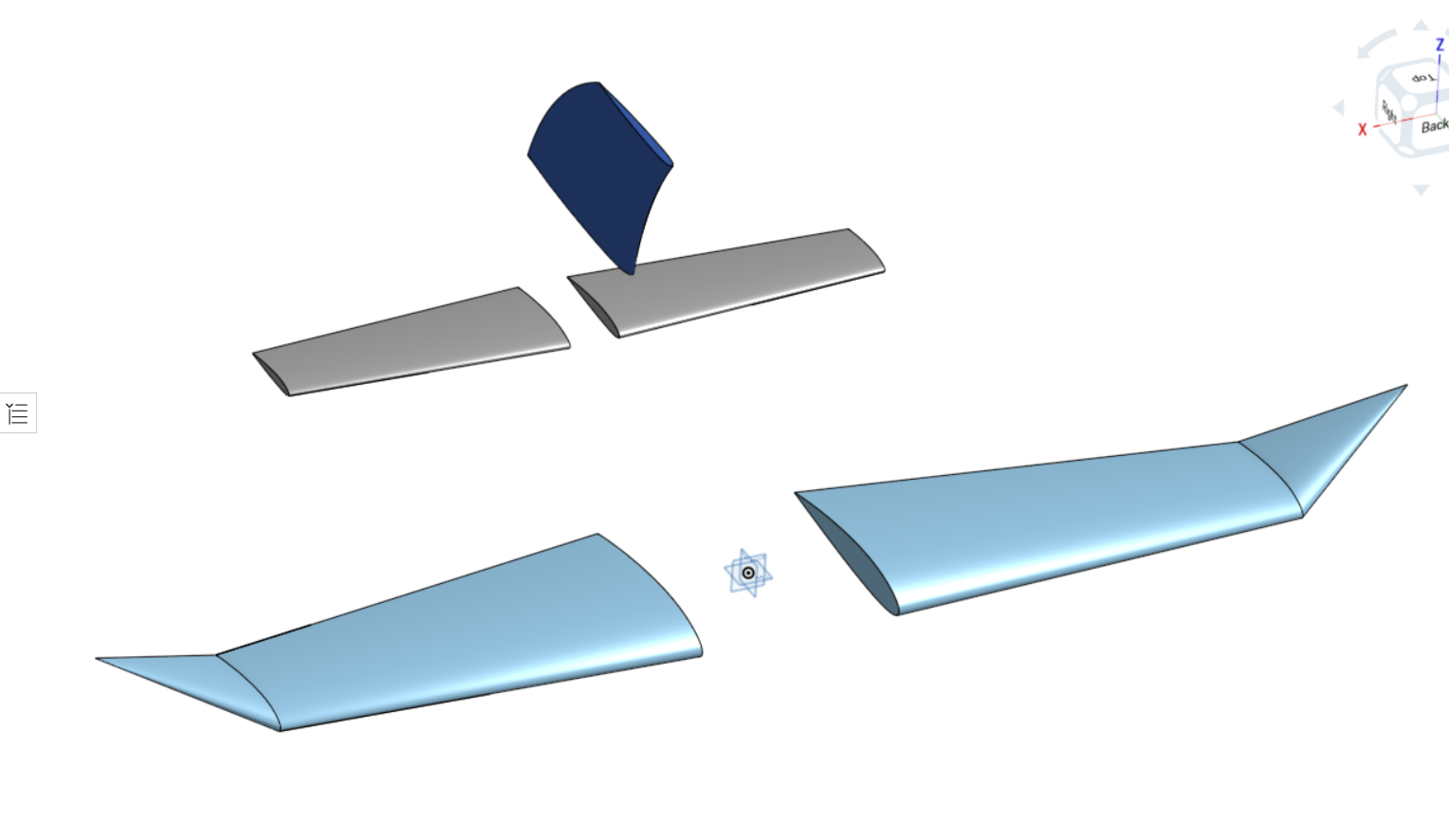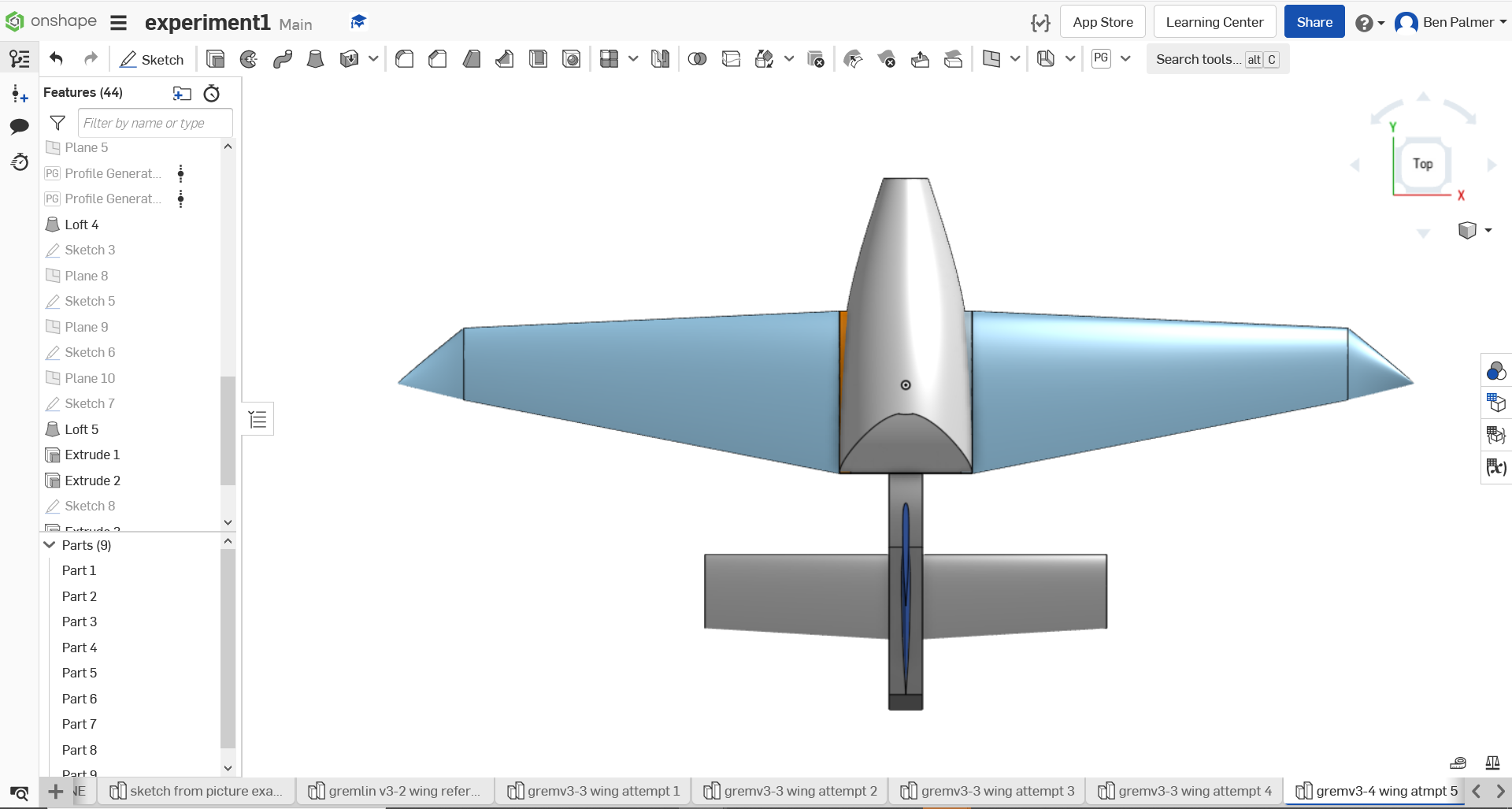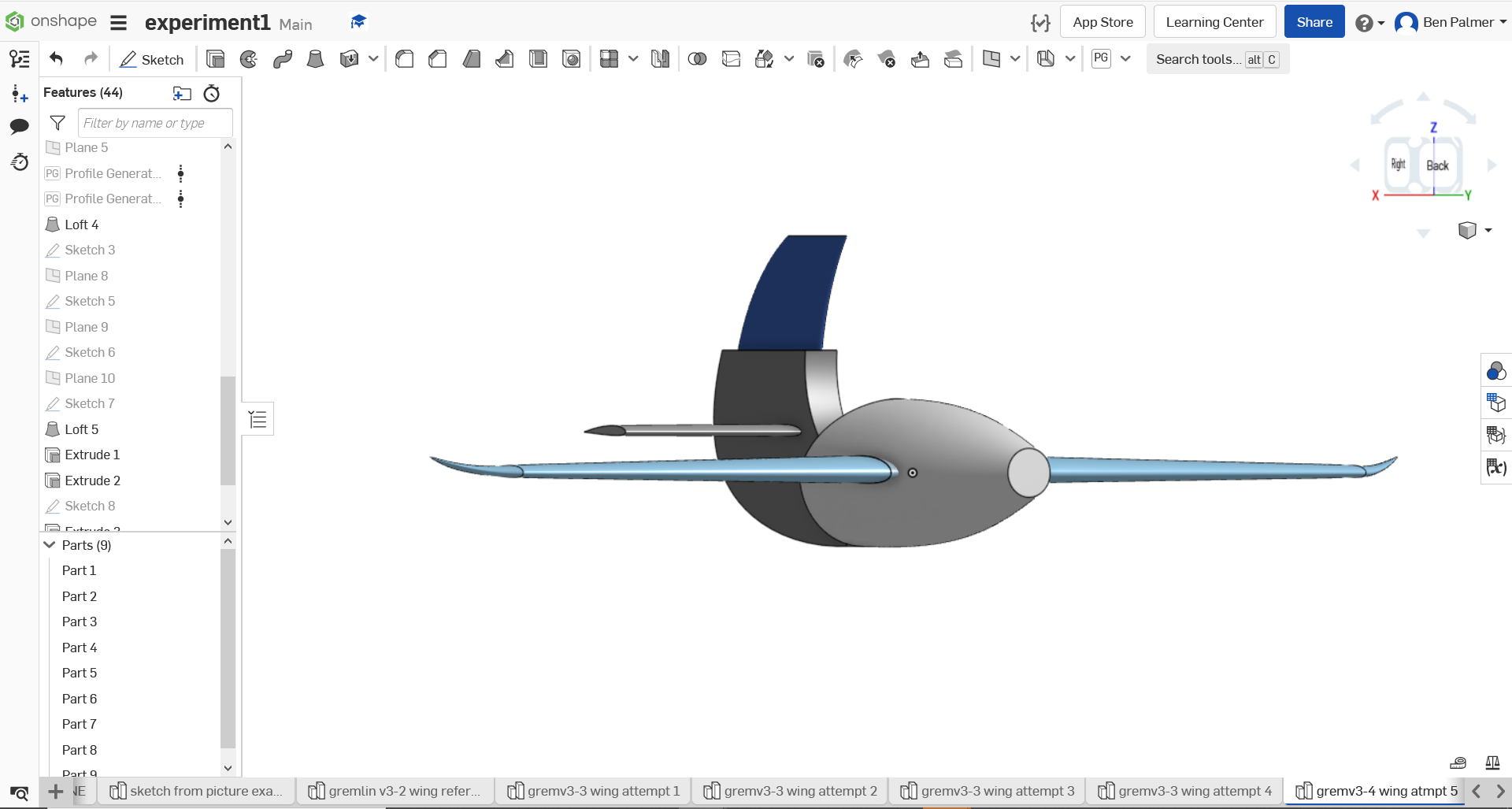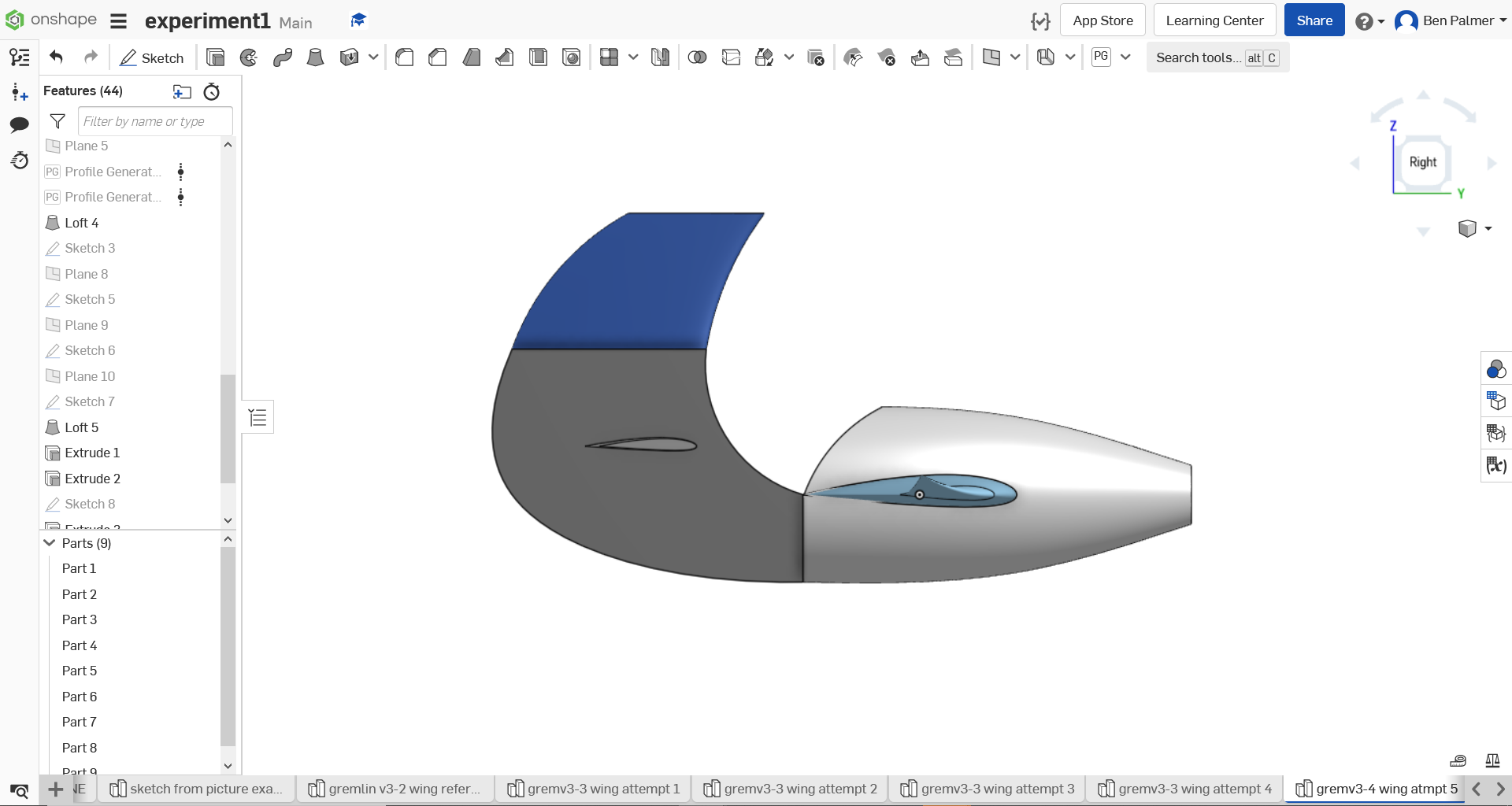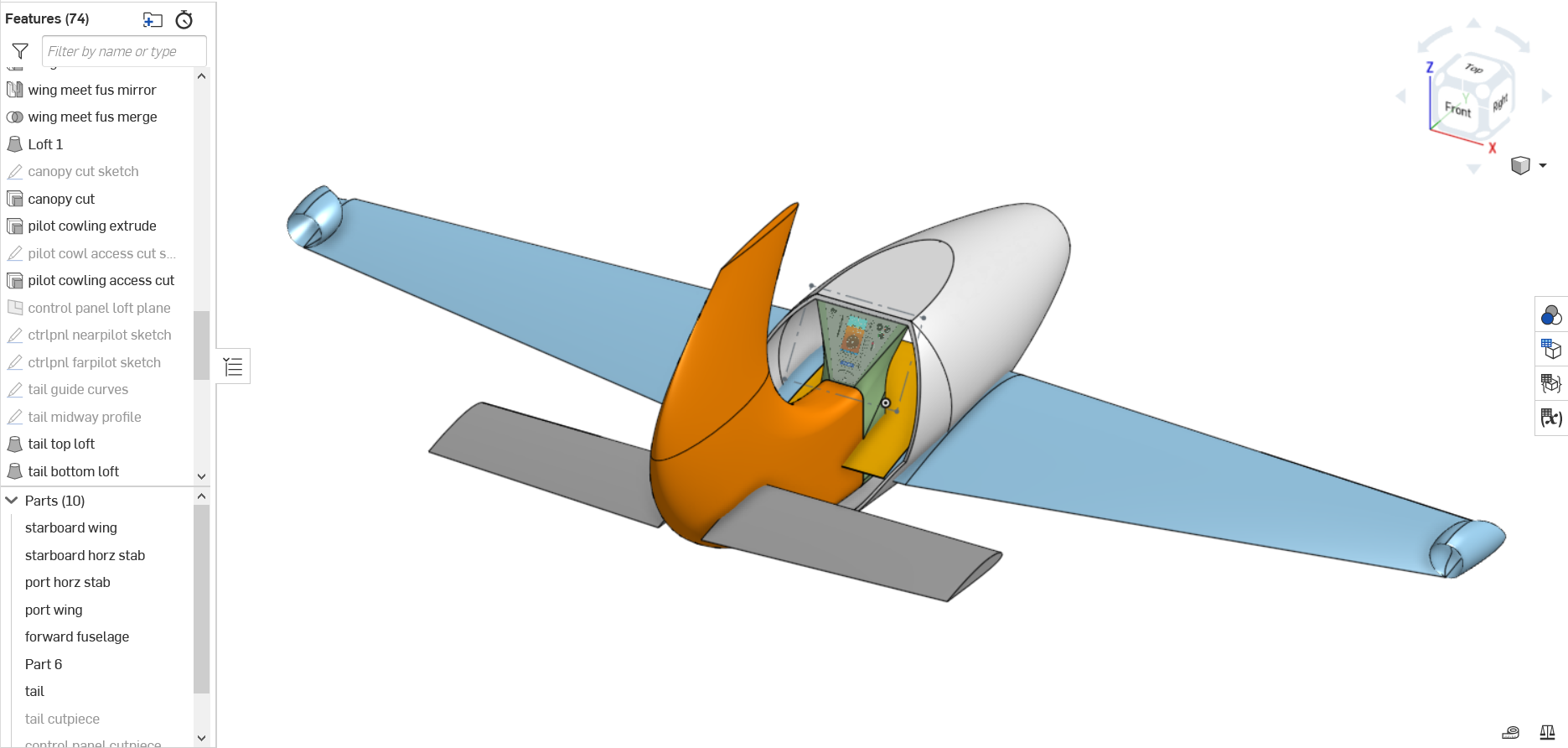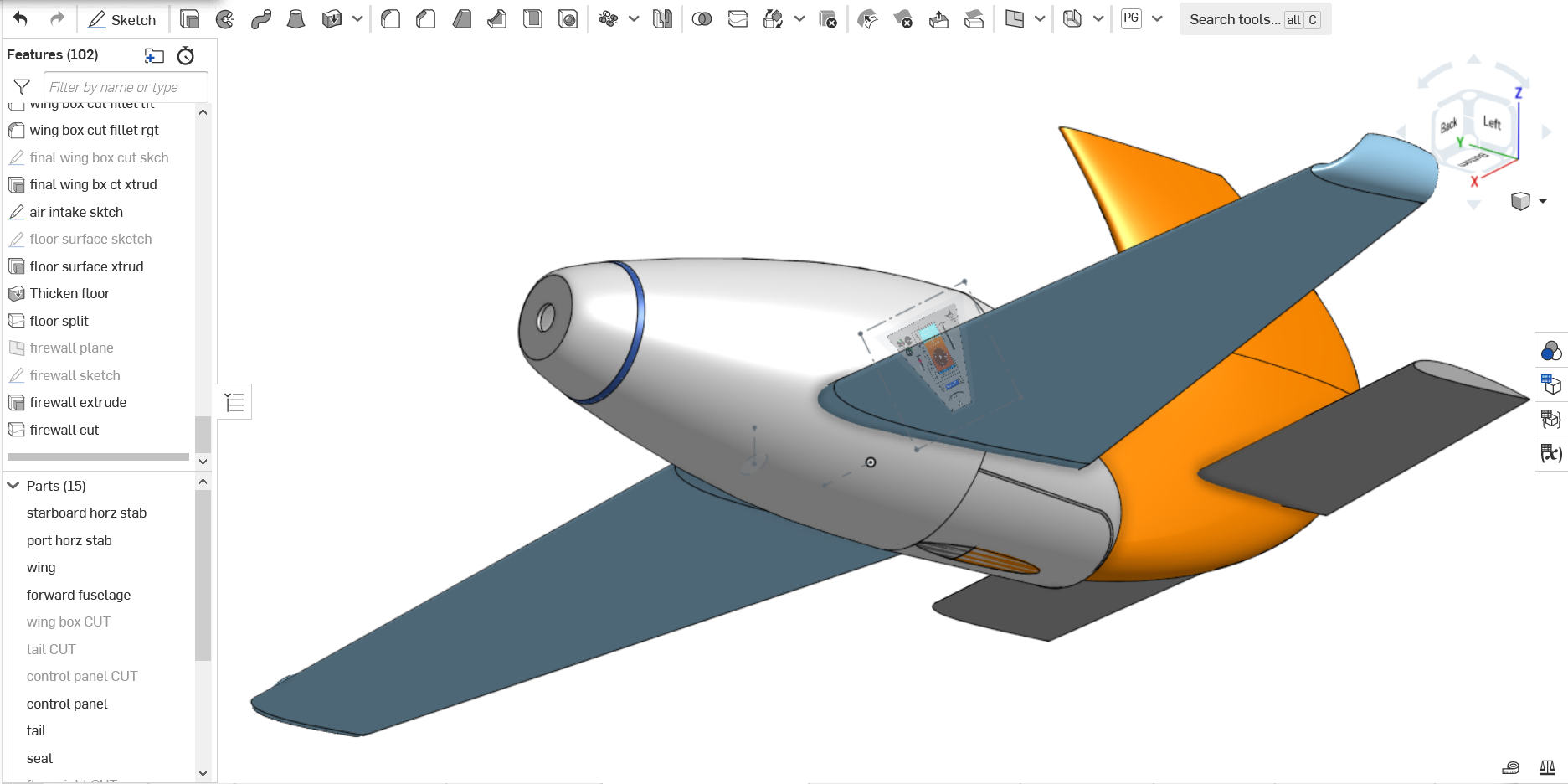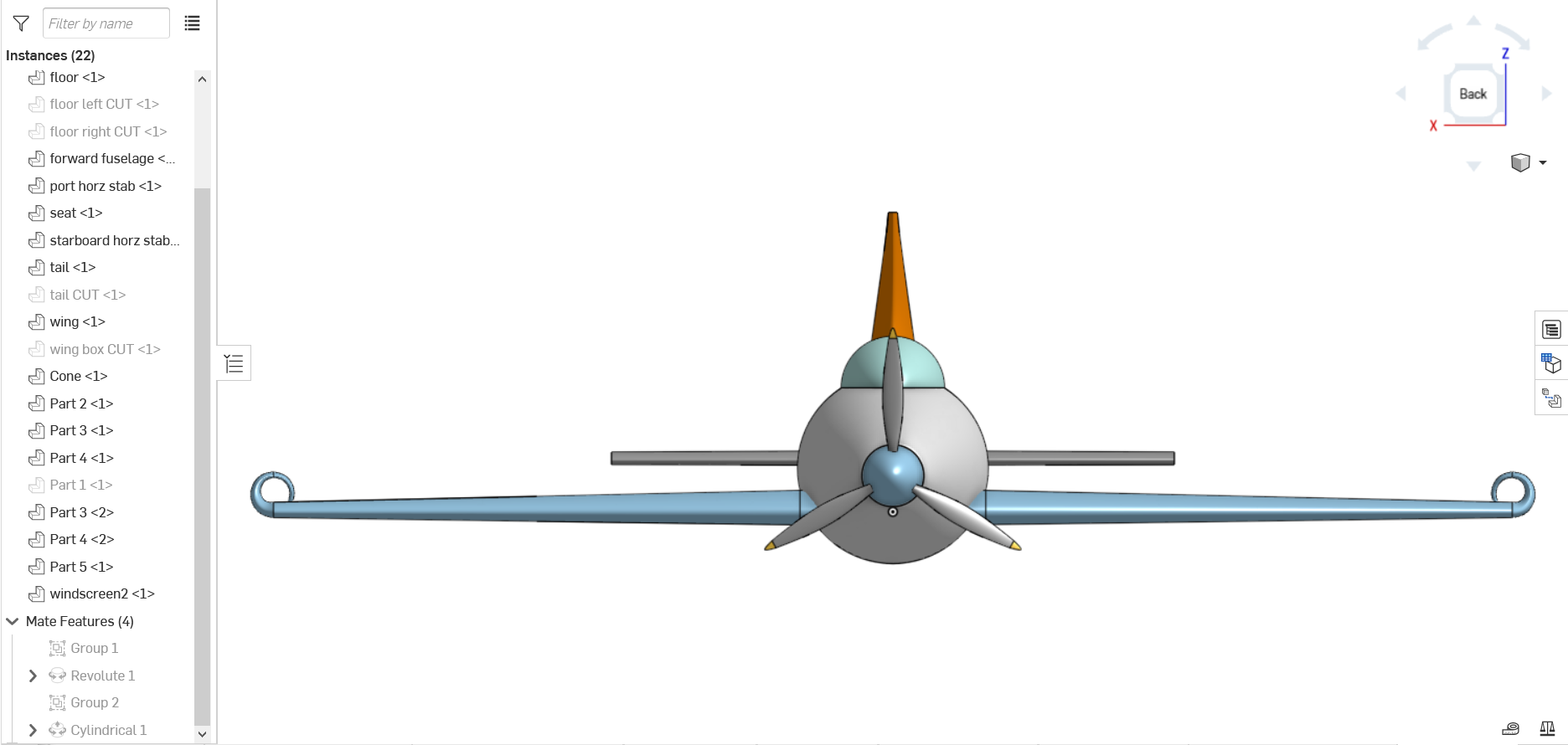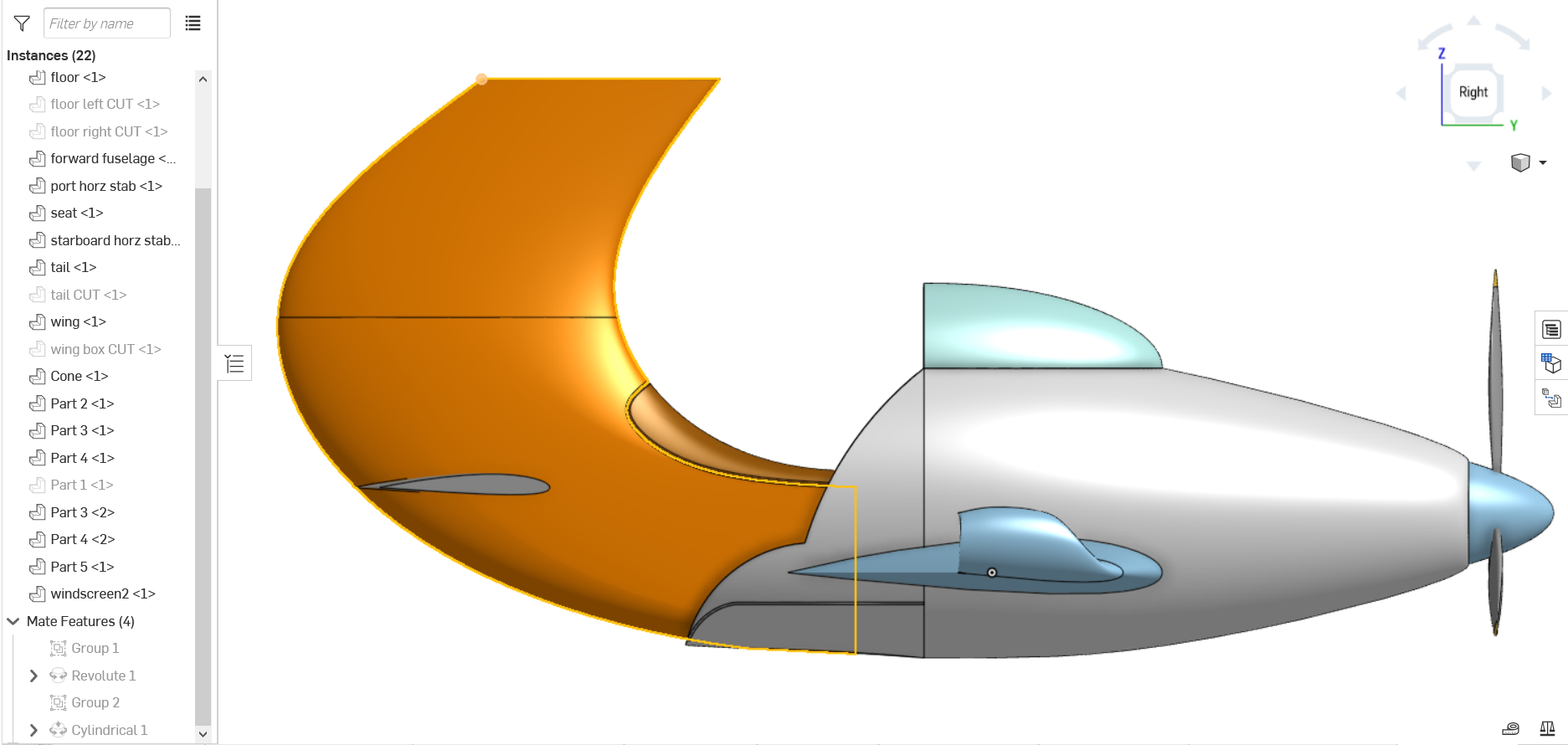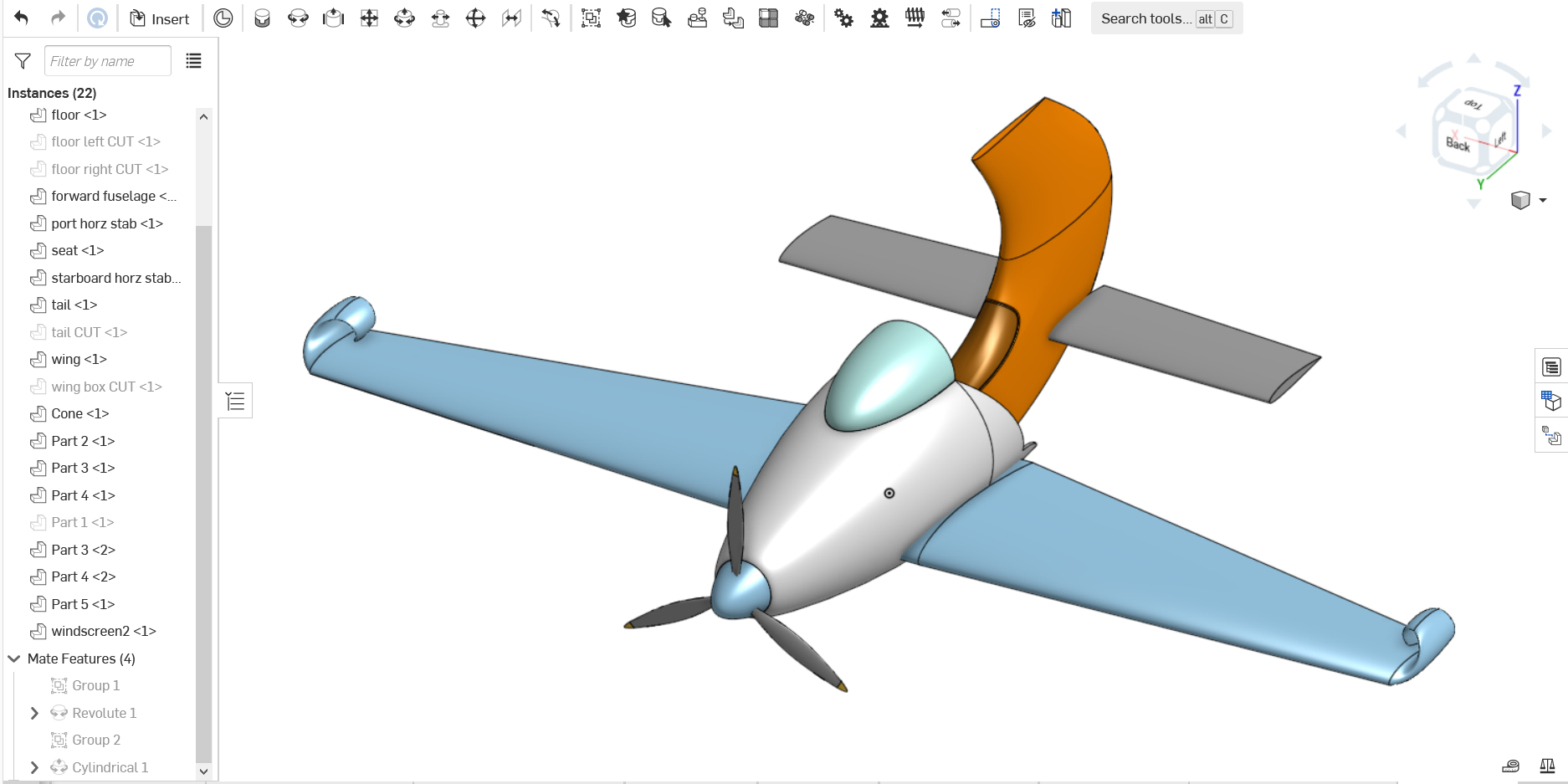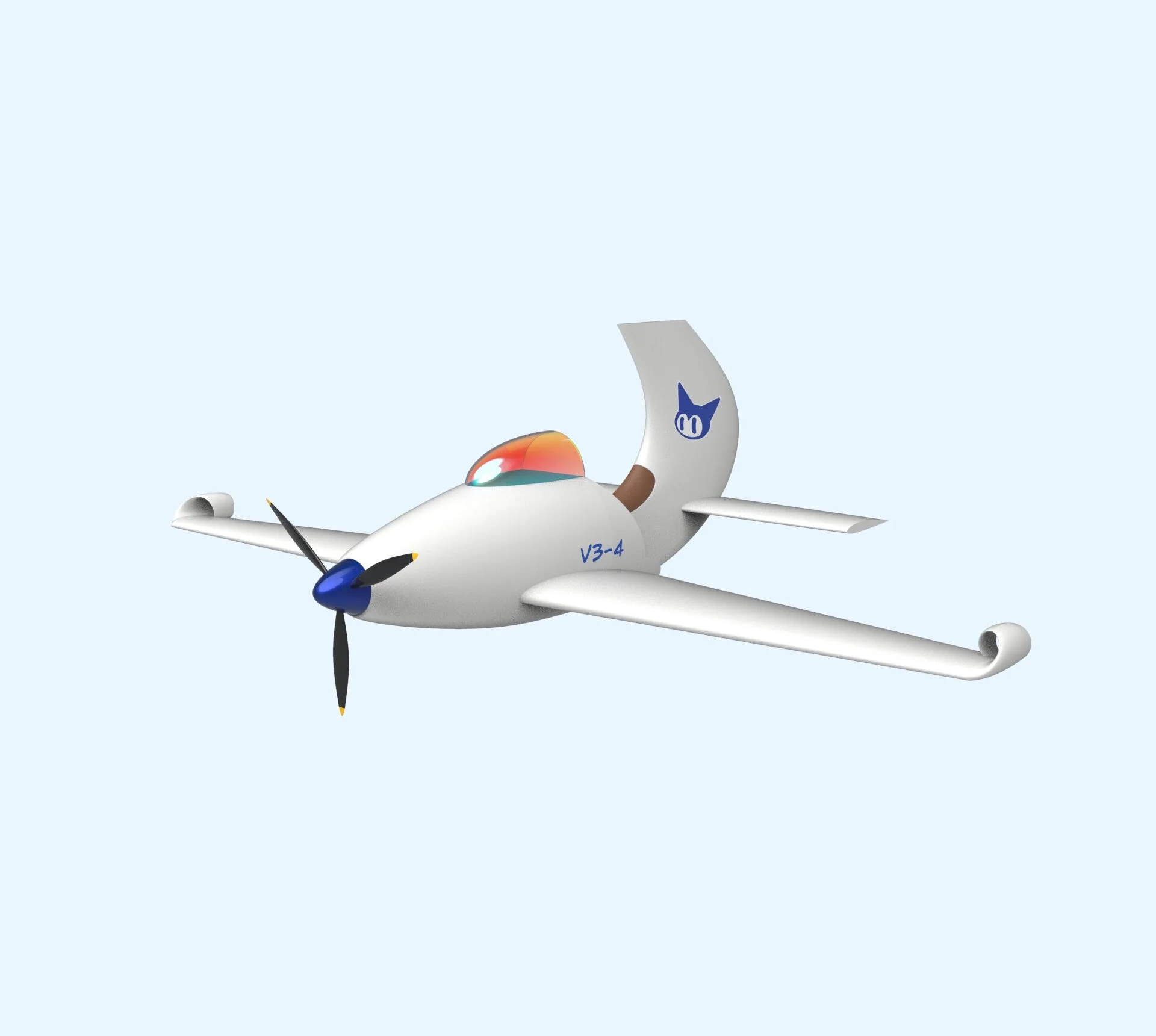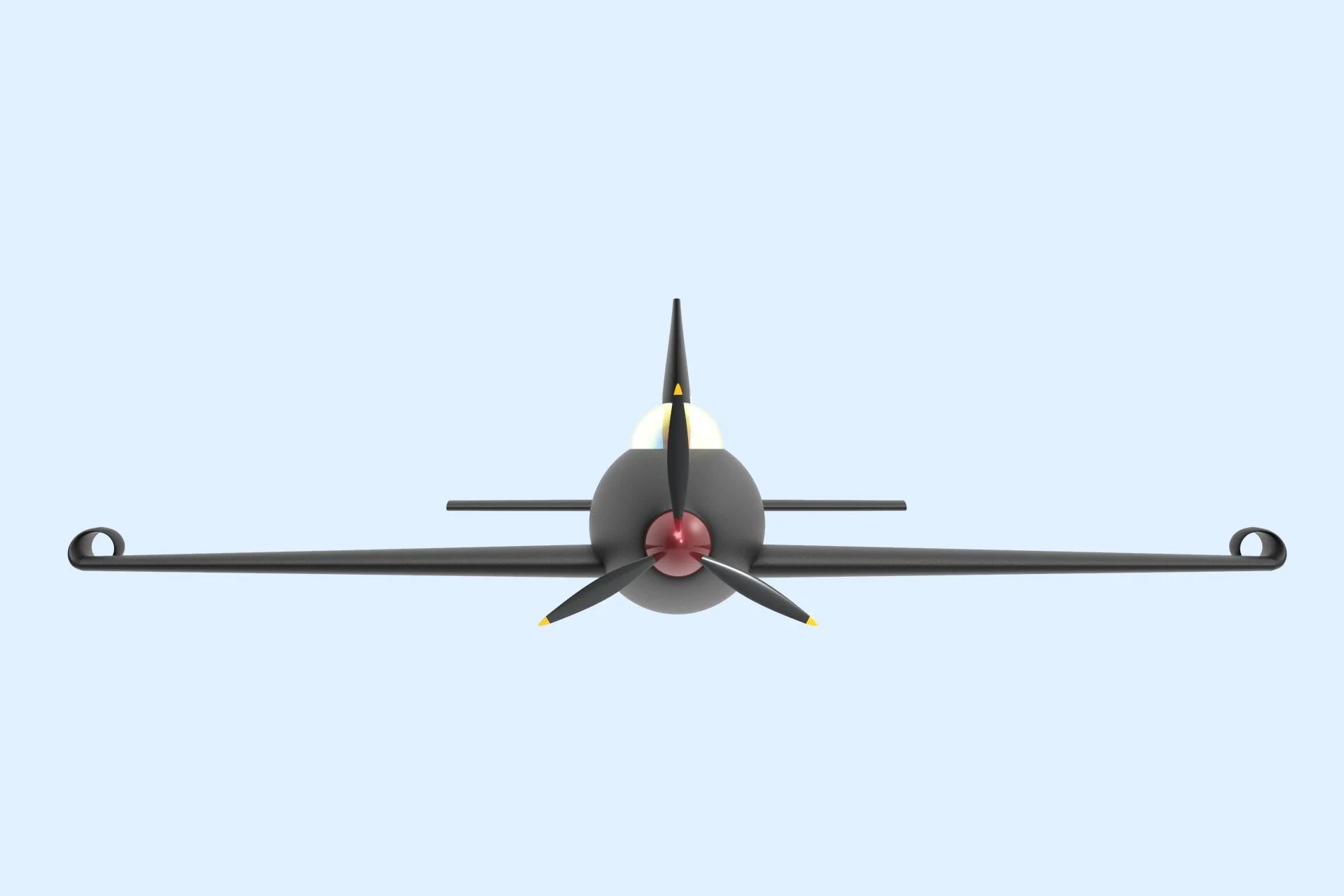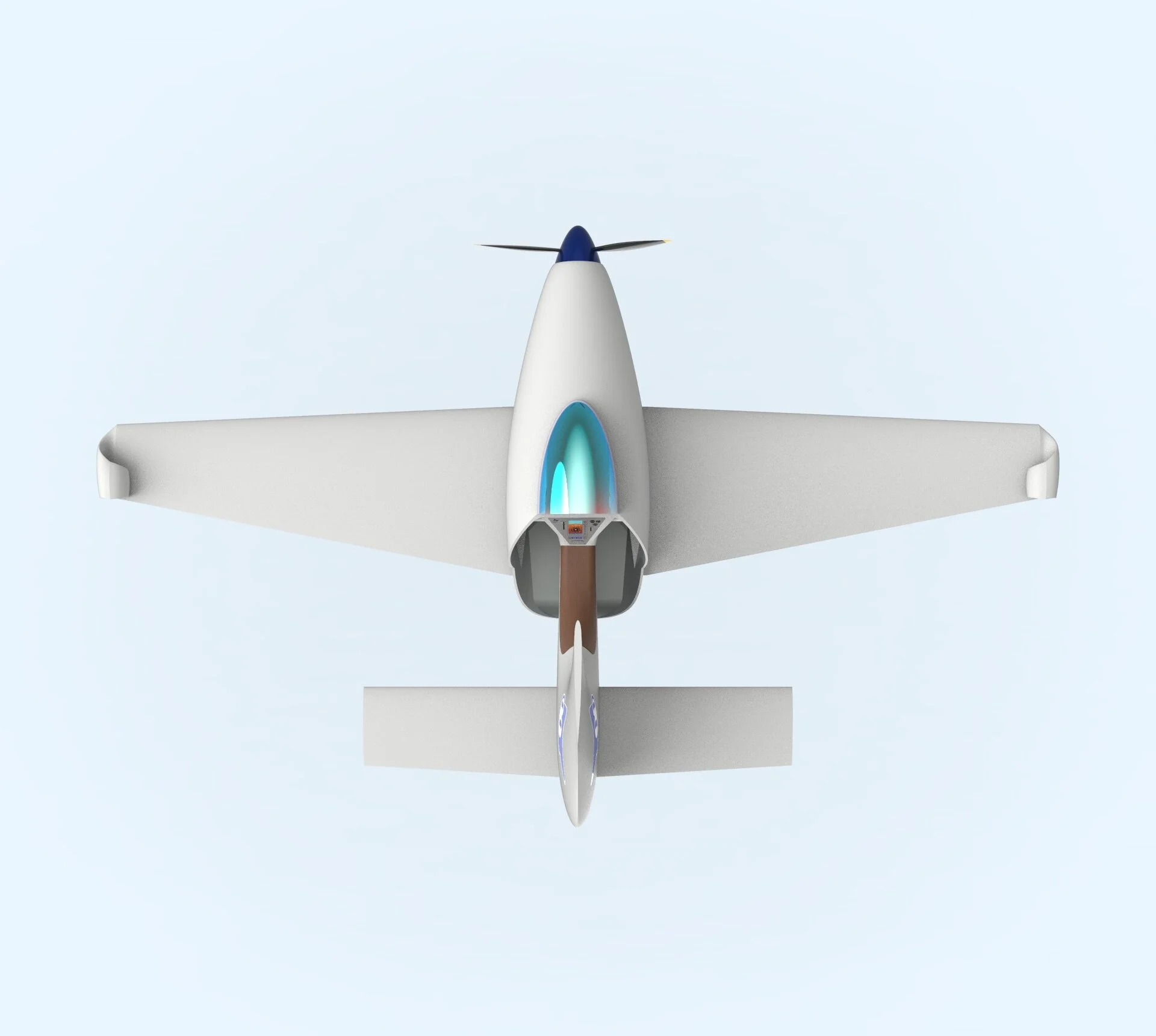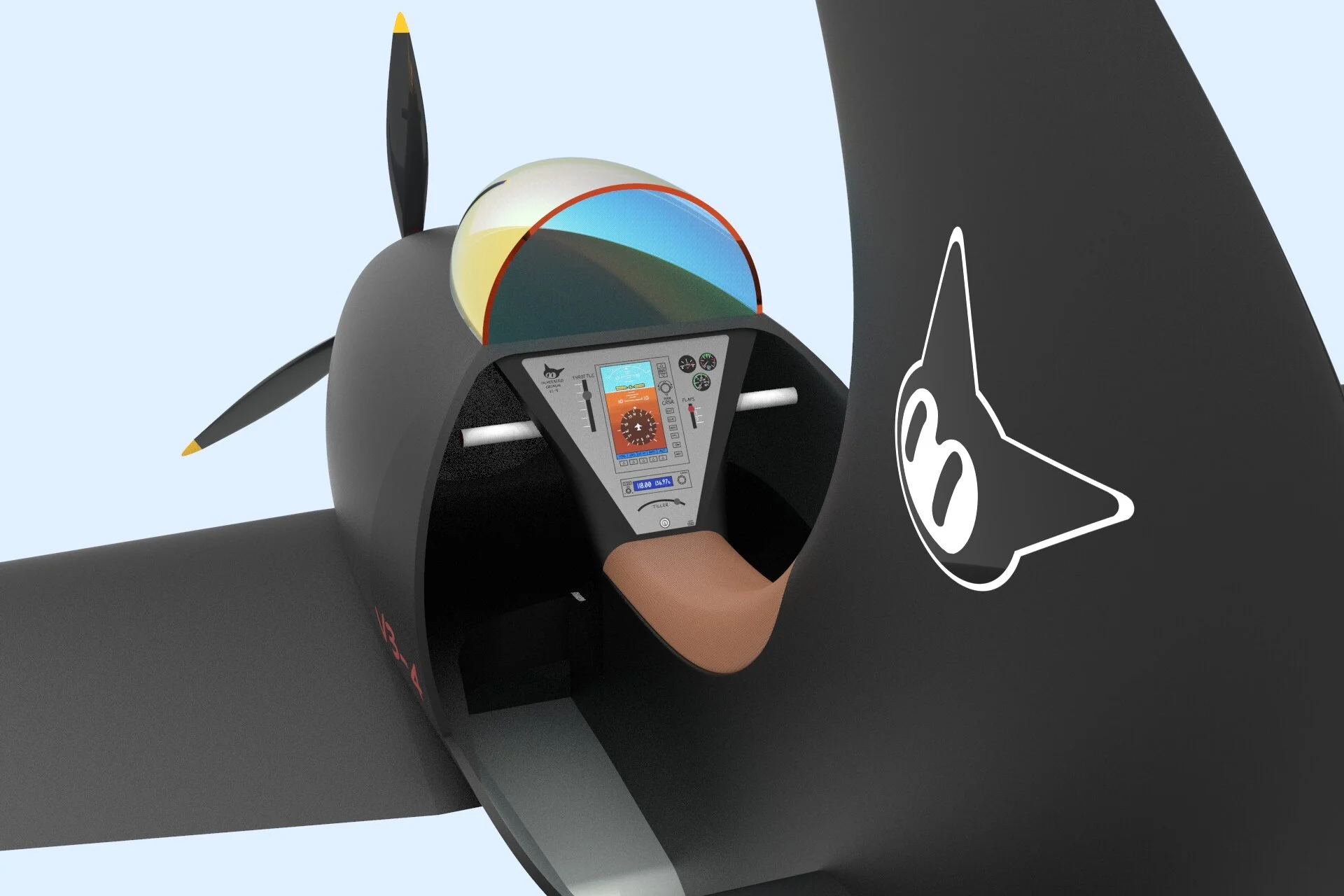Gremlin V3-4 Personal Aircraft
A personal aircraft making flight more accessible and immersive.
Independent Study - Spring 2021
Purpose.
It has been more than a century since the Wright Brothers first achieved powered flight and really ignited humanity’s dream of dancing with the winds. And yet, the glory of flight remains inaccessible for most people. Sure, if you have the money you could purchase a plane ticket or even spend hours - nay, years - training to fly.
But what if flight was as intuitive as riding a bicycle and just as available?
Inspiration.
The seed of this project was planted in my mind during the Spring semester of 2020. I was researching novel aircraft designs as part of my senior capstone and stumbled across the Scaled Composites Raptor. The Raptor was a small-scale test bed for high altitude UAV’s (Unmanned Aerial Vehicles) with an odd distinction; the test pilot rode the craft as if it were a horse. The official Scaled Composites website explains it like this: “The UAV tech in 1992 was being vetted, so having a safety pilot ride onboard was a way to protect the customer’s investment.”
High res. image courtesy of an unnamed poster on Reddit’s r/WeirdWings page.
It is common when designing an aircraft to start from airplanes already in existence. Though there aren’t any “bicycle-aircraft” to build off of, there are a plethora of single engine light sport aircraft. I drew from the Hummel Ultracruiser, Hummel Bird, Parker Teenie Two, but the PIK-26 Mini Sytky was the primary template for what would become the Gremlin.
Image courtesy of buildandfly.shop.
Ike The Imp says “Start with what you know, even if you know nothing.”
Design.
The design of the craft followed the steps laid out in Aircraft Design: A Conceptual Approach by Daniel P. Raymer, with additional guidance from Easy Aircraft Design, an Instructable by FlyBoy38L.
Above is my early rendition of the full concept, drawn in Procreate. The design would feature a motorcycle-style cockpit and the front fuselage would wrap around the pilot, encouraging airflow steadily around the plane. It would sport a front mounted “tractor” propeller to ensure steady airflow over the wings and reliable lift. The three blades of the prop minimize the vibrations the pilot will feel from the passing induced airflow stream.
While much of aircraft design is equations and analysis, it is important to visual the product every step of the way. Below is an example of the effectiveness calculations, also drawn in Procreate. These help me to determine if the wings and tail stabilizers will place nice with each other and tweak their sizes and spacing. The visual calculations are augemented with spreadsheet calculations done in Excel.
Engine Sizing
An important quality of a good airplane is having a low stall speed, which is the lowest possible speed an airplane can fly before the wings fail to produce lift. The stall speed is dependent on a myriad of variables, and to accurately calculate this I knew I would need to know what engine I was using and its associated weight. (Weight is very important to aeronautical engineers. VERY important.) I benchmarked a series of five different types of motors - which can be viewed below - before settling on the Pipestrel E-811 electric motor. Electric motors in large planes are very inefficient, but they can be quite efficient in small planes, and having an engine that produced no exhaust was important to this open-cockpit plan. As this was a conceptual exercise, price was a variable that could be ignored.
Controls
Piloting a plane requires using all four limbs to control the plane in a three dimensional space. In this (very) open cockpit design, the pilot will be strapped in, but will likely require their legs to provide additional stability and restraint. This necessitated that all control surfaces be operated from the hands, so I devised a system, based on the throttles of motorcycles, that allows for this.
Below is my rendition of the instrument cluster as it would appear to the pilot, drawn using Procreate.
Process Logbook
All of my hand calcs, notes, and sketches resided in my Process Logbook, a comprehensive record of the (often-iterative) design process. This website page only scratches the surface of the decisions and analysis that went into this project, but you can view then entirety of the process in PDF form using the button below!
Ike the Imp
Ike the Imp is the official mascot of the Gremlin V3-4 Personal Aircraft. I’m not sure where he came from. He just showed up one day and never went away. But he’s pretty cool.
Ike The Imp says “The best way to avoid getting lost is to know where you’ve been. ”
CAD Modeling.
Throughout the design process, OnShape was used to model and iterate on preliminary wing geometries. This way, parameters such as projected area and surface area could be easily calculated and tweaked.
Early wing lofting done using OnShape.
To aid in the modeling of the full craft, lofting sketches were created in Procreate to help visualize dimensions and lofting cross-sections.
Lofting sketches done in Procreate.
Modeling the full craft in OnShape began as a series of rudimentary lofts to gain a sense of sizing and spacing. These were gradually replaced with the finalized lofts and shells. A slideshow showing the progress of the model can be viewed below.
One of the greatest challenges of the modeling phase was the tail loft. The tip of the tail is an airfoil curve ending in a point and the base of the loft - where the tail connects with the control panel - was originally a rectangle. Lofting between these two incongruous shapes resulted in failed surfaces due to a mismatch in the number of vertices. The problem was rectified by rounding the hard angles of the rectangle. If I were to revisit the problem, I would probably make the lower portion of the rectangle a semicircle rather than simply rounding off the corners.
Final Renders and Technical Specs.
Wingspan 20.41/6.22 [ft/m]
Length 12.80/3.90 [ft/m]
Height 5.58/1.70 [ft/m]
Empty Weight (Incl. Batteries) 371.00/168.28 [lbs/kg]
Payload 180.00/81.65 [lbs/kg]
Cruising Speed 111.85/180.00 [mph/kph]
Stall Speed 60.14/96.79 [mph/kph]
Engine Pipestrel E-811 Electric Engine 20Ah 4.75kWh
Takeaways.
This project taught me a lot about the interplay between engineering and design. Certainly, I developed the Gremlin with an aesthetic in mind, and this created constraints for the engineering. However, the engineering was an iterative process, and often geometries had to be tweaked significantly in order to affect equation outputs by mere fractions.
I learned that engineering is not a process where one picks the right equation and gets the right answer. The engineering process is often lengthy and circuitous and there is never one right or wrong way to go about it.
I also learned that good design and good engineering must work hand-in-hand, because they have more impact on each other than one might expect.
Overall, I am quite proud of this project, and maybe someday I can get an actual aeronautical engineer to help me bring it to life! Until then, I would like to thank Prof. Kate Leipold at RIT for helping me bring this concept to life here.
Any last words, Ike?
Ike The Imp says “Always wear your seatbelt!”
Sources.
Scaled Composites Official Site - Project 226 “Raptor”
https://www.scaled.com/portfolio/raptor/
Scaled Composites Raptor Image
https://www.reddit.com/r/WeirdWings/comments/9zrzu0/giddy_up_the_optionally_manned_raptor_scaled/
PIK-26 Mini Sytky Image
https://buildandfly.shop/product/pik26-mini-sytky/
Aircraft Design: A Conceptual Approach by Daniel P. Raymer
D. P. Raymer, Aircraft Design: A Conceptual Approach. Washington, D.C.: AIAA, Inc., 1992.
Easy Aircraft Design Instructable by FlyBoy38L
https://www.instructables.com/Introduction-65/



